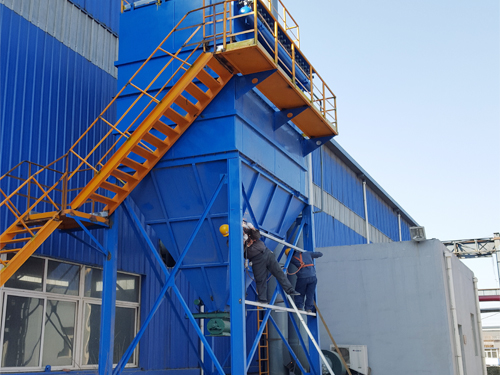SURVIVAL THROUGH QUALITY
PRODUCT CENTER
-
Pulse dust collector
-
Mine dust collector
-
Boiler dust collector
-
Metallurgical dust collector
-
Carbon plant dust collector
-
Chemical dust collector
-
Rubber dust collector
-
Woodworking dust collector
-
Single machine dust collector
-
Static electricity Dust collector
-
Cyclone dust collector
-
Wet dust collector
-
Filter cartridge dust collector
-
Insert valve (gate valve)
-
Ventilation butterfly valve (cold air valve)
-
Spiral conveyor (auger)
-
Scraper conveyor
-
Dust humidifier
-
Bucket elevator
-
Ash discharge valve
-
Material Handling Equipment
-
Wet scrubber
-
Dust collector
-
Dust removal filter bag
-
Dust removal bag cage
-
Polishing platform
-
Waste gas treatment equipment
-
Electric control cabinet
-
Fan
-
Smoke welding machine
-
Liquid level switch
-
Dust removal filter element
-
Aeration cushion
-
Sweeper
-
Dust suppression device
-
Solenoid valve

Coal fired boiler dust collector
The coal-fired boiler dust collector is a dust removal equipment used on this equipment. In order to prevent dust containing sparks from directly entering the dust collector and causing damage to the dust filter bag, and reduce the service life of the dust collector, a flame arrester is installed in front of the inlet of the dust collector to crush and extinguish small sparks mixed in the dust before entering the dust collector for filtration.
The coal-fired boiler dust collector adopts a pulse bag filter with online dust removal mode, designed with a filtering wind speed not exceeding 0.8m/min, and has been improved at the inlet by adding a flow blocking device to ensure that the dusty gas can enter the equipment box at a uniform flow and speed. The bag is made of PPS filter material from the boiler, which has good filtering performance, good temperature resistance, strong performance, service life, and ultra-low emissions.
The coal-fired boiler dust collector is specifically used for the treatment of exhaust gas from various large, medium, and small coal-fired boilers, and for the treatment of sulfur-containing, high-temperature, and high humidity gases. The interior of the dust collector is treated with filter bags, which are resistant to high temperature, and the skeleton is treated with silicon. The treatment has a small footprint, high filtration speed, long service life of the filter bags, and the emission concentration can reach below 30mg/m3 under normal use. The filter bag can be used continuously for 24 months, with equipment automation, online detection and maintenance, and simple operation, making it the choice for coal-fired boiler exhaust gas treatment in recent years. At present, coal-fired boilers account for the vast majority in the power and heating industries. The basic application of electrostatic precipitators for flue gas dust removal in coal-fired boilers. But with the increasing environmental requirements and the widespread use of electrostatic precipitators, their weaknesses have gradually been exposed.
The dust collector of coal-fired boilers is widely used in real life. During the production process of coal-fired boilers, a large amount of small dust containing small sparks is generated, which not only pollutes the air but also causes great harm to human health. It needs to be dealt with in a timely manner.
The dust collector of coal-fired boilers requires the use of temperature resistant materials for production, as it generates a large number of sparks in the air during the production process. To prevent internal combustion caused by high temperature in the dust collector, a small flame arrester is added in front of the dust collector to crush the small sparks until they disperse and extinguish. The dust is then filtered through a dust collector to discharge fresh air.
Selection of dust collectors for coal-fired boilers:
1. 91.3% of the dust removal efficiency can be achieved by the vast majority of dust collectors.
2. It can be selected from electrostatic precipitators, bag filters, and water film filters.
Performance advantages of coal-fired boiler dust collectors:
1. The air volume selected based on the tonnage of the boiler controls the filtration air speed to not exceed 0.8m/min, which not only reduces emissions but also extends the service life of the cloth bag.
2. The external dimensions can be designed according to the site location to meet the on-site situation, with "arbitrariness" in appearance.
3. The selected pulse valve configuration has a service life of no less than five years.
4. The filter material PPS is used to make dust removal cloth bags, with a service life of no less than two years. If there are requirements, they can be proposed.
5. The dust collector has undergone careful polishing and rust removal, and has been sprayed with paint and topcoat to resist wind, sun, and rain.

